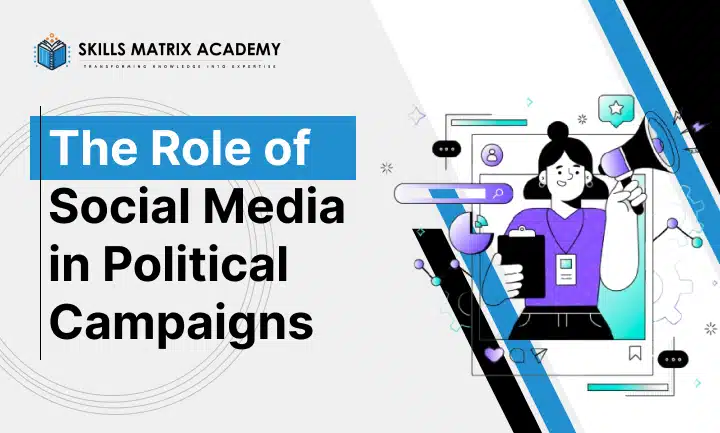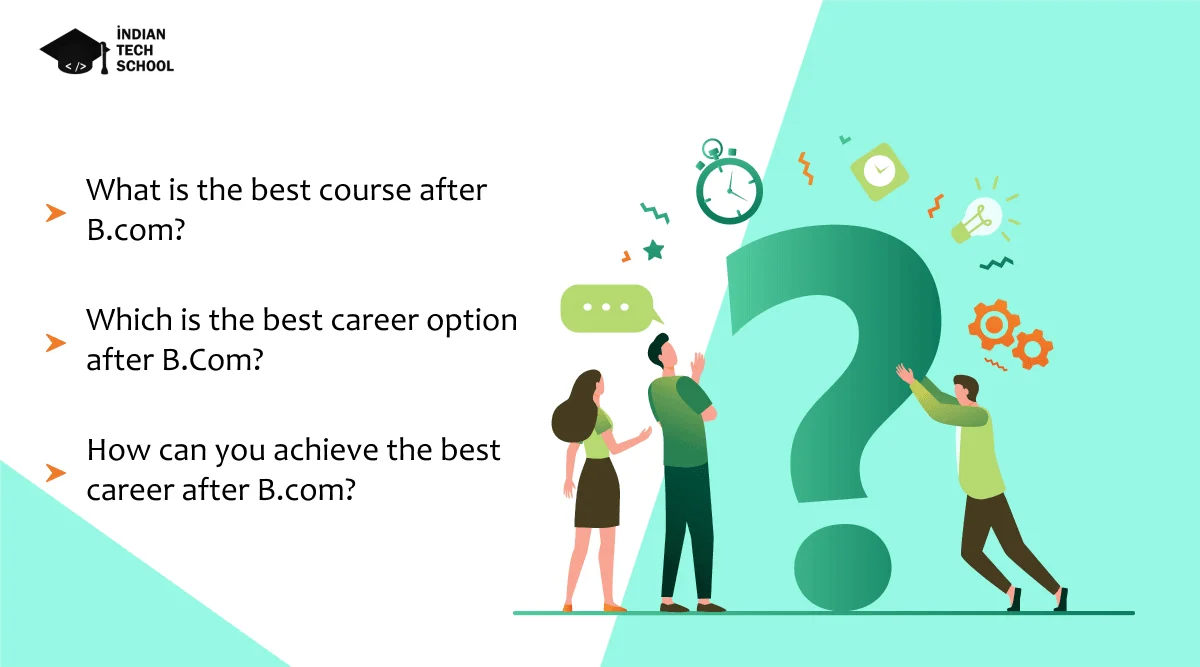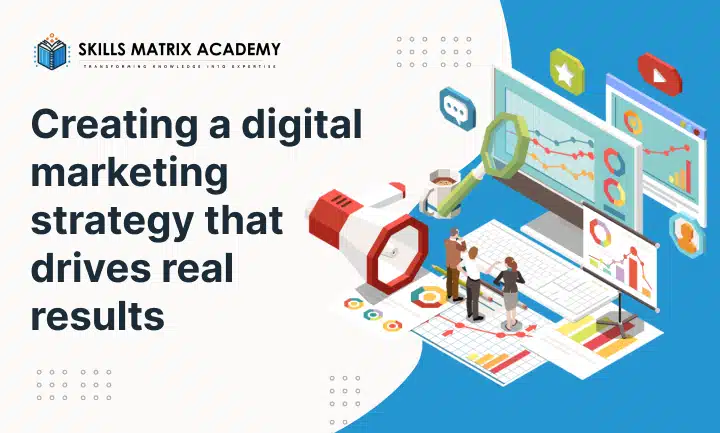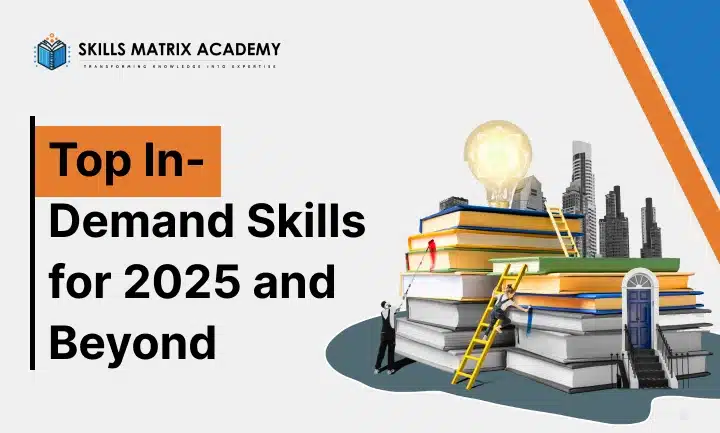How Social Media is Reshaping Political Campaigns
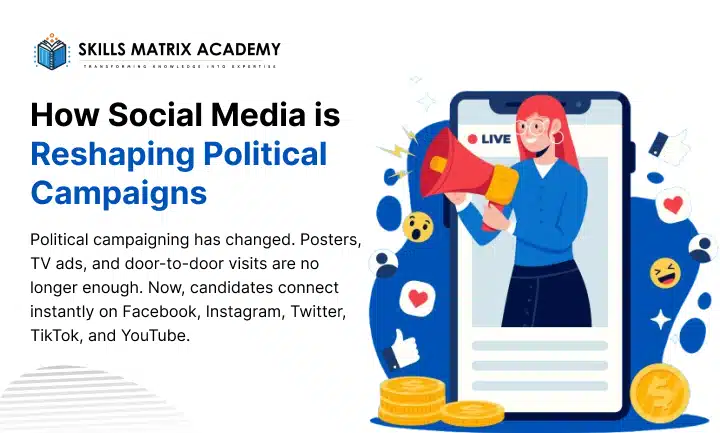
Political campaigning has changed. Posters, TV ads, and door-to-door visits are no longer enough. Now, candidates connect instantly on Facebook, Instagram, Twitter, TikTok, and YouTube.
This shift has completely changed how campaigns work. Social media gives leaders the ability to convey messages, share opinions, and even rally people in real-time. It’s faster, more personal, and much more engaging than traditional campaigning.
But with great opportunities come serious challenges. Let’s explore how social media is revolutionizing political campaigning, what new doors it opens, and the risks that come with it.
Why Political Candidates Need Social Media
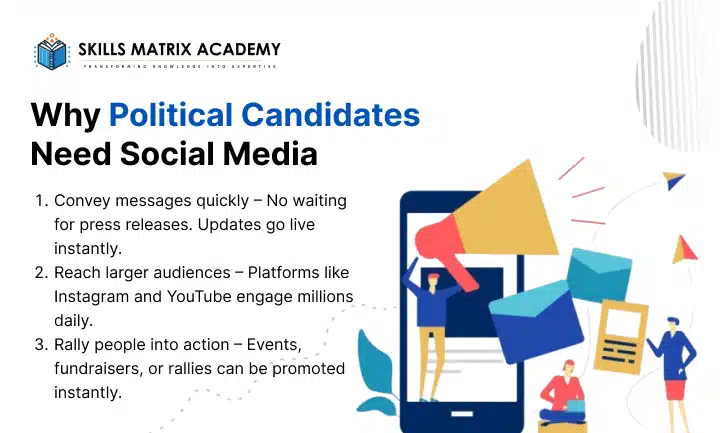
Political candidates use social media for more than just promotion. It allows them to:
- Convey messages quickly – No waiting for press releases. Updates go live instantly.
- Reach larger audiences – Platforms like Instagram and YouTube engage millions daily.
- Rally people into action – Events, fundraisers, or rallies can be promoted instantly.
Unlike traditional campaigning, where time and money are major barriers, digital platforms provide faster, cheaper, and wider coverage.
The Rise of Social Media in Political Campaigns
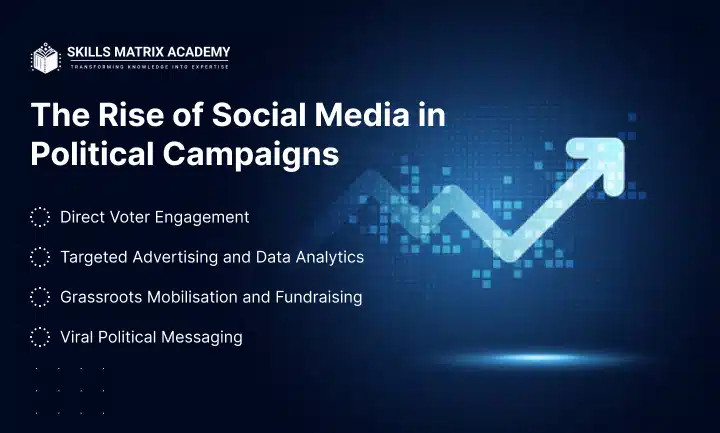
1. Direct Voter Engagement
- The biggest change is direct voter engagement. Candidates no longer need news channels to spread their ideas.
- Twitter and Facebook let candidates share updates instantly.
- Live tools like Instagram Live and YouTube allow real-time Q&As. This makes campaigns feel personal and transparent.
- Features such as Q&A sessions, polls, and live chats make voters feel involved. Politicians also get instant feedback.
- This real-time connection builds trust and makes campaigns feel more human.
2. Targeted Advertising and Data Analytics
Targeted ads powered by data are another game-changer. Unlike TV ads, digital ads target specific groups. Platforms like Facebook and Google allow targeting by age, location, and interests.
Examples:
- Students may see posts about jobs or education.
- Older voters may see content on pensions or healthcare.
- Campaigns track engagement and adjust fast. If one message fails, they replace it.
- With predictive analytics, strategists can even guess future voter concerns. This keeps candidates one step ahead.
3. Grassroots Mobilisation and Fundraising
- Social media also helps with fundraising and mobilisation.
- Platforms like ActBlue and WinRed let small donors give online—even $5 matters when thousands donate.
- Viral posts and online challenges inspire people to share, volunteer, and donate. Movements like #GetOutTheVote and #VoteForChange attracts young voters.
- Peer-to-peer fundraising makes it easier. Supporters create donation pages, invite friends, and share links. This ripple effect goes beyond traditional networks.
4. Viral Political Messaging
- One viral video can beat a million-dollar TV ad.
- Memes, short videos, and satire spread fast at almost no cost.
- TikTok and Instagram Reels let candidates show personality—younger voters, who usually ignore politics, like casual and fun content.
- Campaigns also use influencer partnerships, filters, and trending challenges. These tools make political content entertaining and shareable.
- This is viral political messaging—a quick and powerful way to shape opinions.
Strategies for Using Social Media in Election Campaigning
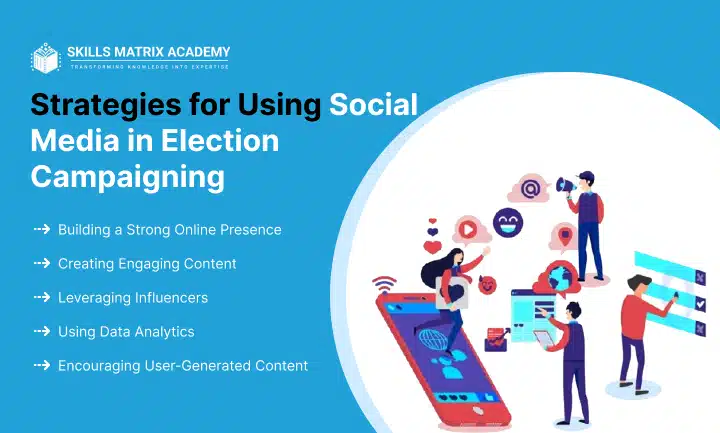
Social media has changed how elections are run. It gives political parties a fast and direct way to reach voters.
But getting attention online is not easy. Clear strategies are needed to connect with people, earn trust, and gain support.
Here are the best ways to do it.
1. Building a Strong Online Presence
The first step is to build a strong online presence. Campaigns cannot grow without it. Parties should create official accounts on all major platforms. These accounts act as the digital face of the campaign.
Once active, accounts must stay alive. Post regular updates. Share policies in simple words. Respond to questions. Address voter concerns.This consistency builds trust and credibility.
2. Creating Engaging Content
Attention spans are short on social media. Boring posts get ignored. That’s why parties need to create engaging content:
- Visually appealing posts
- Short, clear messages
- Easy-to-understand formats
Use infographics, videos, and catchy slogans. These grab attention and explain ideas clearly. Short videos often work better than long posts.
3. Leveraging Influencers
Another smart step is using influencers.Influencers already have large followings. They can expand reach, endorse candidates, and spread campaign messages.
People trust influencers. Their content feels personal and real. They encourage followers to participate in elections.
4. Using Data Analytics
Smart campaigns use data analytics. Platforms show what voters like, comment on, and share. By analyzing this, parties can:
- Tailor messages for different groups
- Change strategies quickly
- Focus on popular topics
This makes campaigns more effective and targeted.
5. Encouraging User-Generated Content
Supporters should be encouraged to create their own content. This may include:
- Testimonials from local voters
- Stories about their support
- Photos and videos from events
Such content feels personal. When it goes viral, it spreads faster than official accounts. This builds a sense of community and stronger connections.
Tools and Platforms for Managing Social Media Campaigns
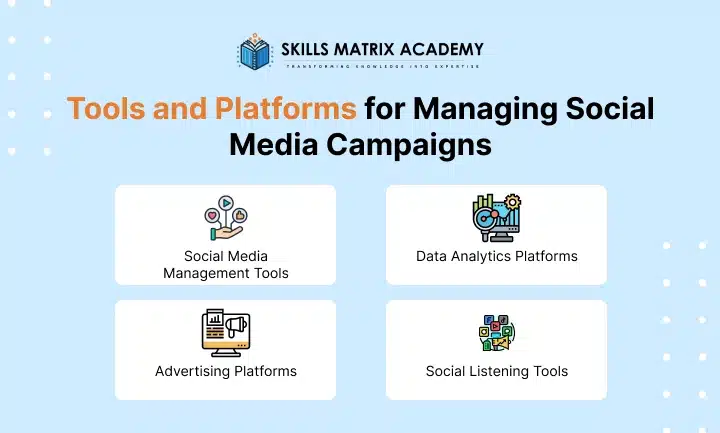
The right tools make social media campaigns simple and effective. They save time, grow reach, and support smarter decisions.
1. Social Media Management Tools
These tools make daily work easier. They let you schedule posts, manage multiple accounts, and track engagement.
Popular options: Hootsuite, Sprout Social, Buffer.
They keep campaigns on track, post on time, and monitor results. Just like a digital marketing course in Jaipur teaches time-saving tips, these tools help campaigns work smarter.
2. Data Analytics Platforms
Analytics tools show how voters act online. They track traffic, sentiment, and engagement.
Examples:
- Google Analytics – tracks website visitors
- Facebook Insights – shows reach and engagement
- Twitter Analytics – tracks mentions and growth
With these insights, campaigns can fine-tune messages and connect better with voters.
3. Advertising Platforms
Paid ads increase reach. They target by location, interests, and demographics.
Popular platforms: Facebook Ads, Twitter Ads, Google Ads.
They help campaigns reach the right audience faster.
Similar to lessons from social media training in Jaipur, these ads demonstrate how to target the right people at the right time.
4. Social Listening Tools
These tools track mentions and conversations about parties or candidates. They show public opinion and allow quick responses.
Timely replies prove that parties listen. This builds trust and helps control negative stories.
The Challenges of Social Media in Political Campaigns
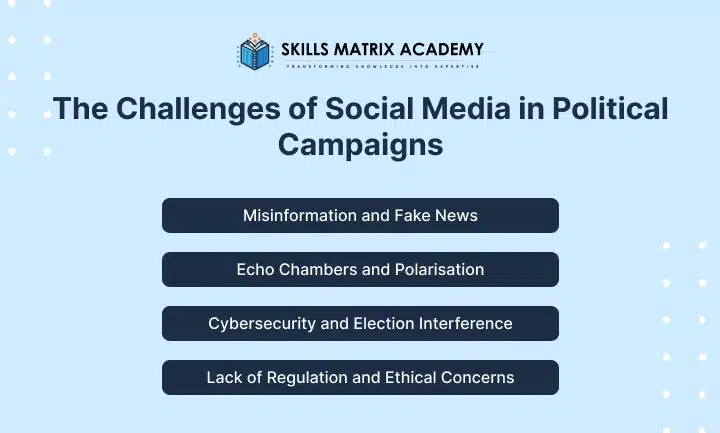
Social media has transformed politics. It connects leaders with voters faster than ever. But it also brings serious risks. Misinformation spreads quickly. Online debates get toxic. Security threats and ethical issues are rising.
Here are the main challenges campaigns face:
1. Misinformation and Fake News
- False news spreads online faster than facts.
- Fake stories, edited images, and conspiracy theories confuse voters.
- Deepfake videos make the problem worse.
- Platforms add fact-checking, but false content still slips through.
2. Echo Chambers and Polarisation
- Algorithms show users content they already agree with.
- This creates “echo chambers” and blocks new opinions.
- As a result, society becomes more divided.
- Online debates often turn hostile.
- Cyberbullying and harassment increase.
3. Cybersecurity and Election Interference
- Hackers target campaigns and voter databases.
- Foreign actors use bots and fake accounts to mislead people.
- Fake ads and manipulated posts threaten fair elections.
- Platforms are fighting back, but risks remain high.
4. Lack of Regulation and Ethical Concerns
- Social media has fewer rules than TV or print.
- Micro-targeted ads raise privacy and manipulation concerns.
- Data misuse and voter profiling weaken trust.
- Governments are pushing for new rules, but tech evolves faster than laws.
- Campaigns must stay transparent to maintain fairness.
The Future of Social Media in Elections
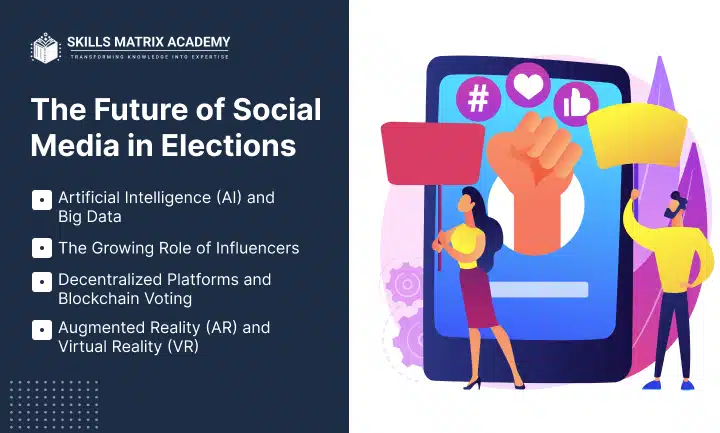
Social media will keep shaping elections. It makes campaigns faster, wider, and more interactive. But the future will depend on smarter tools, new technology, and better strategies.
Here’s what lies ahead:
1. Artificial Intelligence (AI) and Big Data
- AI studies voter emotions and predicts future trends.
- It sends instant, personalized messages to millions.
- Big Data tracks voter behavior in real time.
- Campaigns can adjust strategies on the spot.
- This makes digital campaigns faster and more effective.
2. The Growing Role of Influencers
- Influencers are becoming key players in politics.
- Celebrities reach millions with one post.
- Micro-influencers connect deeply with local voters.
- They explain policies in simple words.
- Their support makes candidates feel more relatable.
3. Decentralized Platforms and Blockchain Voting
- New platforms give voters more privacy and control.
- Blockchain voting reduces fraud and secures identities.
- It makes elections more transparent and trustworthy.
- Micro-social networks may also rise, focusing on niche groups.
4. Augmented Reality (AR) and Virtual Reality (VR)
- AR and VR create immersive campaign experiences.
- Voters could attend virtual rallies from home.
- They may explore policies in 3D environments.
- These tools make campaigns engaging, fun, and interactive.
Conclusion
Social media has already transformed politics. It helps campaigns engage voters. It supports fundraising. It spreads messages fast.
But challenges remain. Misinformation spreads quickly. Polarisation is increasing. Ethical issues are serious. To succeed, campaigns must adapt. They must use new tools but also protect democracy and fair elections.
The future depends on how these challenges are solved. Policymakers, tech companies, and society must work together. If used the right way, social media will stay a strong tool for democracy. It can educate voters. It can empower them. It can engage them.
As digital platforms grow, their influence will grow too. That is why candidates, voters, and regulators must act with care. Ethical use is the only way to keep politics fair and transparent.


